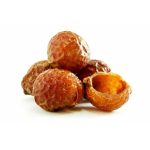In this study, the effect of distillation methods: hydro-distillation (HD) and microwave hydro-distillation (MHD) of (mentha arvensis L.) growing in Lam Dong province, Southeast of Vietnam, were investigated on the yield and chemical composition of their essential oils. The results showed MHD (0,075%) gave more oil yield than traditional HD (0,053%). Distillation parameters were found: distillation period 20min and material/water ratio 1:2,5g/ml for the MHD and 110min, the material/water ratio 1:6g/ml for the HD. In conclusion, the MHD method were chosen for comparing qualitative chemical compositions of Japanese essential oils grown in Ba Ria –Vung Tau, Lam Dong and Ho Chi Minh, Vietnam. The results of GC-MS analysis showed that the chemical compositions of oil from the three regions were similar with small quantitative differences of some compounds. Menthol was found as a major constituent in the essential oils and responsible for the distinctive smell and flavor of the Japanese mint. The menthol content in oil from Lam Dong (70,6%) gave higher result when compared with the localities in HCM (69,45%) and Ba Ria -Vung Tau (67,85%).

Comparison of the main chemical components of Japanese mint from three regions: Lam Dong (LD), Ba Ria – Vung Tau (BR) and Ho Chi Minh city (HCM)
Author: MEng. Tran Bui Phuc







